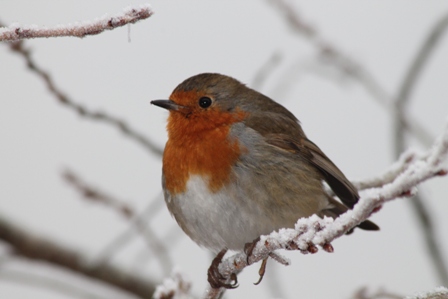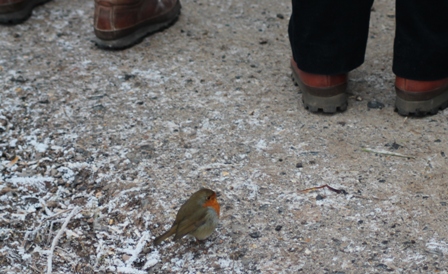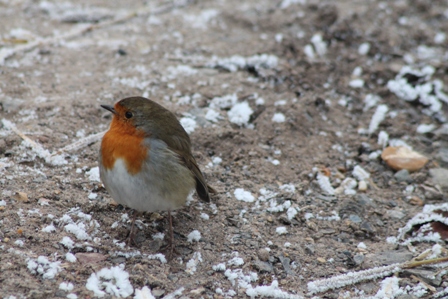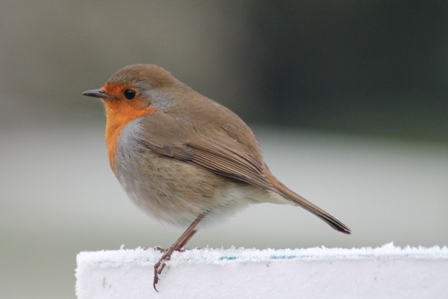Wisley Gardens, 13th December 2012

Robin, Wisley Gardens, Surrey, 13/12/12 (Dominic Couzens)
People love Robins for all kinds of reasons, but the bird’s unusually confiding nature has to one of its greatest delights. This also makes it unusually easy to photograph, as I found out at Wisley today, when Robins seemed to follow the group around like North Korean minders. But what is it that makes a Robin tamer than, say, a Nuthatch or a Chaffinch? There are a few reasons that spring to mind. Firstly,

Robin at people's feet, Wisley Gardens, Surrey, 14/12/12 (Dominic Couzens)
Robins are known to follow large mammals in forests, utilising the disturbance afforded by large feet or curious noses which flushes insects out into the open, where slip-fielding birds can snaffle them up. Robins follow deer, for example, and also Wild Boar, which are particularly liable to loosen the soil and send insects running. From this ancestral behaviour it doesn’t take much for a Robin to feel at

Robin, Wisley Gardens, Surrey, 13/12/12 (Dominic Couzens)
home following the activity of a human gardener tilling the soil, weeding or sweeping leaves, all of which flushes precious food into view.
Another reason why Robins are tame is history. Being a woodland edge species, the Robin has always lived near humans. In the last 150 years in Britain it has coexisted close to us but not been persecuted. On the other hand, in France, the tradition of killing and eating small birds has lasted much longer, and Robins are more reticent across the Channel.
One more reason is a simpler one. The Robin simply has an inbuilt curiosity, presumably something that enables it to seek novel feeding opportunities. Other birds, such as Wrens, for example, are equally curious but more careful about hiding. And that’s why we don’t send cards with Wrens on them at Christmas.

Robin, Wisley Gardens, Surrey, 13/12/12 (Dominic Couzens)

I truly love my garden robins, they will tap an empty hairdresser daily , just to let me know., To which I will respond with pleasure and food! I m sure this will give him kudos amongst his feathered friends.
I have a Robin that comes to my garden will the baby Robin’s come to my garden as well
I had two robbins visit me on a cold winter day, and I thought to myself–it’s so early to see these birds. They are normally out in early spring. But it’s the end of Jan, so I was surprised. Luckily I had [ut food on the ground and on my bird feeders, and so maybe they were hungry. I also put a new wooden birdhouse on a vine across from me, so maybe they were looking for a place to nest. I get great pleasure from watching birds I see around me: bluejays, red cardinals, sparrows, finches, and chickadees.